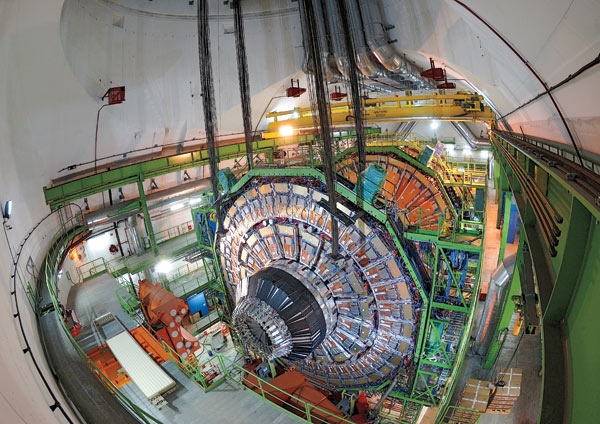
The two beams of protons will speed through their underground tunnels at a site straddling the border between France and Switzerland.
The CMS is named for its compact magnet, called a solenoid because of its coiled shape, and for one of the particles it specializes in detecting, the muon. When protons collide inside the CMS, the magnet at its heart (metal collar) deflects the resulting subatomic particles so that their paths intersect with many layers of detectors.
Data gathered inside the CMS and other detectors will be reconstructed as event visualizations like the hypothetical ones pictured here. In this image (and the one on the next page), the dots represent ionization signals left by particles traversing a detector. Software picks through the data to trace particles’ paths, represented as lines. The existence of newly observed particles is inferred if the products they decay into are detected. One of the particles likely to be detected by the CMS in its early days is called Z prime, says MIT particle physicist Steven Nahn; the evidence it leaves behind is thought to include two easy-to-detect particles, muons and electrons. The visualization is of a Z prime decaying into jets of energetic particles, represented by the rectangular beams.
This story is only available to subscribers.
Don’t settle for half the story.
Get paywall-free access to technology news for the here and now.
